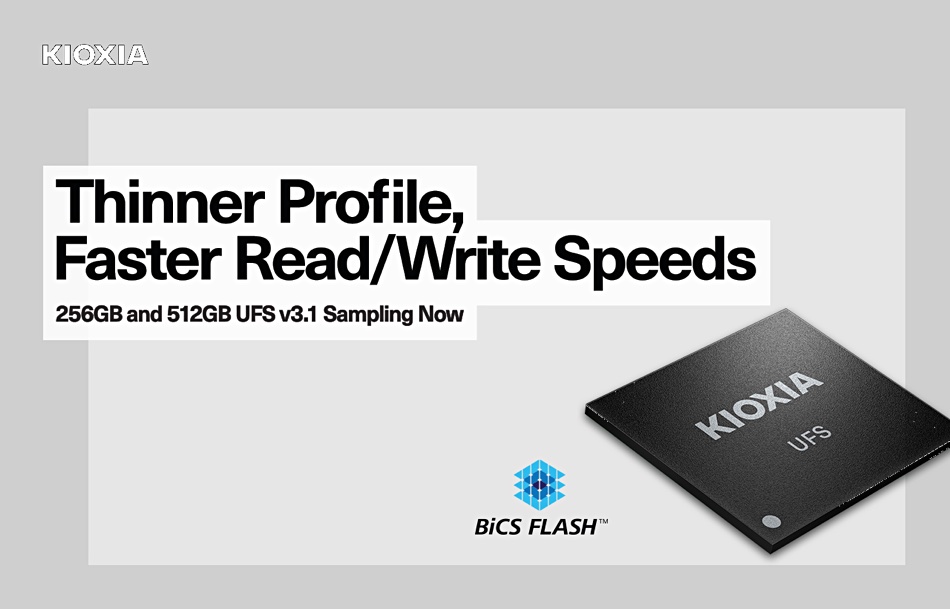Flash fabber Kioxia is sampling a thinner and denser phone flash drive, saying it has faster read and write speeds — but with no details about that, its 3D layer count, or its thickness.
It is a a proof-of-concept (PoC) device for phones needing to work in 5G environments and handle 4K plus video and high-res photos, and uses QLC (4bits/cell) NAND.
Axel Stoermann, VP memory marketing & engineering for Kioxia Europe, issued an announcement statement, discussing “expanding our already broad lineup with new UFS Memory products for applications that demand superior interface performance. With QLC UFS we can offer another solution which will meet the increasing requirements for Flash memory devices.”

Kioxia has followed up its August 2021 phone memory card announcement, in which it promised faster phone drives built with its BiCS 5 (112-layer 3D NAND) and adhering to the UFS 3.1 standard. It then said the card improved performance by 30 per cent for random reads and 40 per cent for random writes.
Today’s news is equally light on details. Faster than what? Thinner than what? Kioxia does not say.
We guesstimated that meant around 2GB/sec sequential read bandwidth and 1GB/sec sequential write bandwidth back in August. Today’s news merely says the QLC drives use 1Tbit dies, and “For applications needing high density, such as cutting-edge smartphones, Kioxia’s QLC technology enables the capability to achieve the highest densities available in a single package” — meaning 512GB.
Let’s not get too excited at that 512GB.
Kioxia fab partner Western Digital announced a Gen 2 UFS 3.1 drive in June last year with 128, 256 and 512GB capacities.
Back in March 2020, Kioxia was sampling a UFS v3.1 card built with BiCS 3 3D NAND technology, meaning 64 layers, and, we understand TLC (3bits/cell) at 128GB, 256GB, 512GB and 1TB capacities. Here we are, 22 months later, two BiCS generations later, and with one more bit per cell, yet capacity has dropped back to 512GB — when it could, we estimate, have reached 2TB. Presumably the phone makers don’t need that much capacity.
We think that using QLC flash means Kioxia has had to overcome inherently lower QLC speeds, compared to the prior or existing TLC flash. By not releasing performance numbers it leaves the door open to doubts about the actual read and write speeds achieved.
Kioxia could say it’s using an SLC write cache, as partner WD revealed back in June, yet it does not.
Here is the table we used in August last year to try and work out what Kioxia’s UFS product technology speeds are:

For now we’ll stick at the 2GB/sec sequential read bandwidth and 1GB/sec sequential write bandwidth for the new drives, and hope more details will come through later.
Kioxia says it is sampling its 512GB QLC UFS PoC devices to select OEM customers.
"Flash" - Google News
January 19, 2022 at 05:04PM
https://ift.tt/3rrpZTO
Kioxia announces detail-free speedy QLC phone flash card – Blocks and Files - Blocks and Files
"Flash" - Google News
https://ift.tt/39L7UpV
Shoes Man Tutorial
Pos News Update
Meme Update
Korean Entertainment News
Japan News Update
Bagikan Berita Ini














0 Response to "Kioxia announces detail-free speedy QLC phone flash card – Blocks and Files - Blocks and Files"
Post a Comment